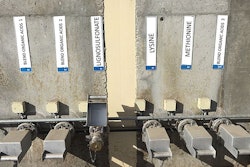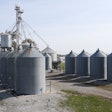
Iowa’s Occupational Safety and Health Administration (OSHA) has ordered food processor Archer Daniels Midland Co. (ADM) and a contractor working for the company to pay tens of thousands of dollars for citations associated with a fatal silo explosion in Clinton, Iowa, that took place this year.
Regulators issued ADM nearly $56,000 in fines associated with five citations for failing to provide employees with proper training and safety equipment, conditions an investigation by Iowa OSHA determined resulted in the death of one firefighter and the injury of another during a January fire and explosion in one of the company’s silos. Iowa OSHA has also assessed nearly $8,000 in penalties for insufficient employee training against BWC Industrial Services, a contractor who was on site at the time.
According to a report from an Iowa OSHA inspector, ADM initially discovered that a silo containing gluten feed pellets at its Clinton facility had become blocked in mid-October. The inspector noted that “although the size and density of the bridge would indicate a gradual formation,” the bridge had not been detected until the silo became completely blocked — a consequence ADM attributed to certain additives being left out of the feed in the silo.
Events leading up to fire
ADM initially hired two contractors, Industrial Silosource and BWC Industrial Services, to assist in breaking up and removing the bridge. Industrial Silosource stopped work on the project in mid-November, at which time the two contractors were removing about 50 to 60 tons of material from the silo per day.
In the days leading up to the January 5 fire, the inspector wrote, BWC staff had noticed that the feed removed from the silo was “hot, smoldering and black in color.” However, BWC staff told Iowa OSHA that ADM directed them to continue their work after being notified of the change in the material.
Flames and smoke were first discovered by BWC staff at 5:30 a.m. on January 5. Within 15 minutes, ADM managers determined the fire was well beyond incipient stages, and called the Clinton Fire Department. BWC remained on-site, and because the contractor had hoses in place at the top of the silo, managers from both companies developed a plan to apply water to the fire using the contractor’s equipment. At this time, the inspector noted, BWC staff informed ADM that they were not trained in using fire hoses.
After firefighters arrived
When Clinton firefighters arrived at the scene, according to Iowa OSHA, ADM communicated that the silo contained a germ product of a slurry-type consistency. It was not clear how long the fire had been burning; a BWC foreman would later inform firefighters that the silo fire had existed for 2 to 3 days. Although firefighters wanted to fight the fire through a hatch on the side of the silo, it was unclear from communications with ADM whether the hatch was above or below the silo’s contents. The fire department determined that the fire would be fought from above, and asked a feed house supervisor to show them the way to a hatch on the top of the silo. The ADM supervisor did not have respiratory protection and was unable to lead firefighters to the hatch.
About 10 minutes after firefighters began applying water through an opening in the roof of the silo, the contents exploded, according to Iowa OSHA. One firefighter was thrown from the roof and killed; a second, who fell into the silo, was seriously injured.
Firefighters later determined that hatches at the bottom and top of the silo had been left open overnight, allowing airflow that fanned the flames inside the silo. Shortly after firefighters decided to climb atop the silo, an ADM manager had advised a Clinton Fire Department commander that he believed the fire could be fought through the side hatch, contradicting previous communications firefighters received.
ADM did not respond to request for comment.

















